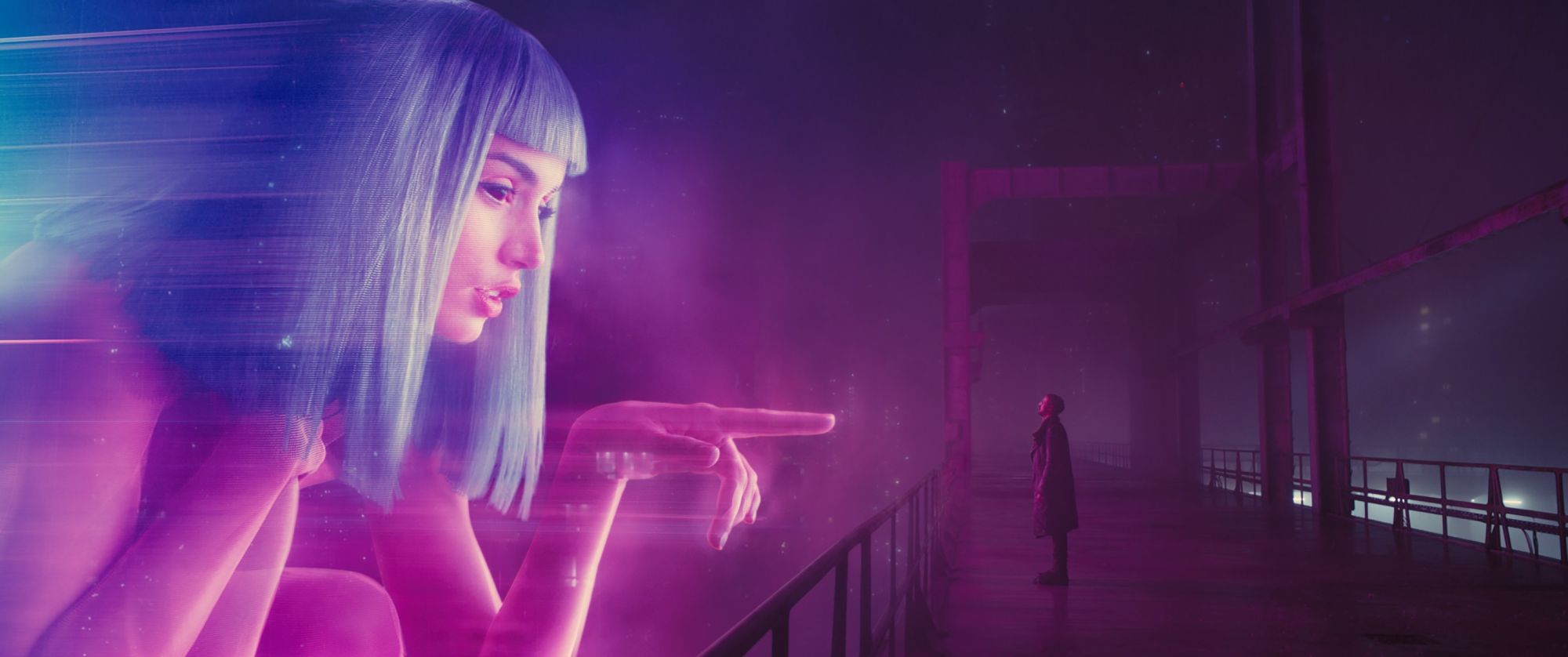Renee April knew she was playing with fire talking to the press. Over the course of our phone interview the costume designer wrapped her answers in riddles and apologized profusely. “They’ll kill me,” the French-Canadian added at one point, laughing.
She was referring to the producers behind “Blade Runner 2049,” 2017’s hotly anticipated sequel to Ridley’s Scott’s sci-fi masterpiece. April, like everyone else involved, is walking a tightrope of nondisclosure agreements. One slip could compromise this unlikely second chapter 35 years in the making.
Pressure abounds. “Blade Runner” is lauded as one of the most accomplished works of science fiction of all time. It achieved cult status through the years thanks in part to Scott’s continued edits, forcing audiences to reevaluate what was once a critical headache – “muddled,” “will turn off many” – but now a film considered poetic, existential and profound. Three decades after release it stands monolithic, casting a long, intimidating shadow. Who would dare try to succeed it?
Not April. At least, not at first. When she was approached by director and long-term collaborator Denis Villeneuve, she didn’t want the gig: “I said ‘Oh my God, I’m going to fail. It’s too much, I can’t.’”
She relented, however, and as its release approaches, she’s glad she took the plunge.
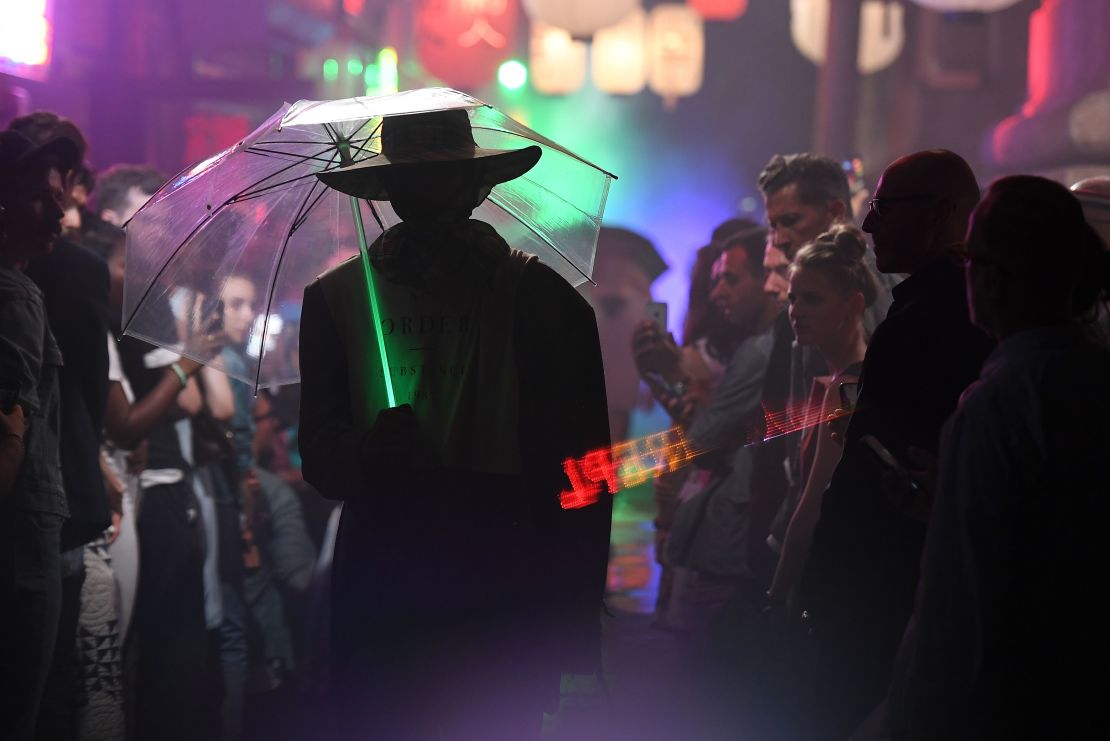
Among audiences, April knows there’s a certain coterie she needs to satisfy: fashion designers. A week prior to our chat, a friend had showed her pictures of Raf Simons’ “Blade Runner”-esque Spring-Summer 2018 collection, staged under the lamps of New York’s Chinatown, with models walking under umbrellas in deconstructed macs.
Simons is just the latest designer to draw inspiration from the film.
“‘Blade Runner’ is one of the sci-fi films that influenced me the most,” Jean Paul Gaultier told CNN, one high-profile example and a man not averse to dressing sci-fi movies himself.
Fashion was integral to the fabric of Scott’s Los Angeles, circa 2019. Unlike the homogenous look of sci-fi forebears like “THX 1138” or “Logan’s Run,” “Blade Runner’s” costume design was rich, varied and uncannily familiar.
Much of its aesthetic was sourced from the past. Costume designers Charles Knode and Michael Kaplan read into the noir elements of detective narrative and saw Humphrey Bogart, James Cagney and Orson Welles in the beleaguered android assassin Rick Deckard. Costumes for Rachael, the femme fatale played by Sean Young, drew explicitly from that era: Kaplan has cited Adrian (costume designer for Joan Crawford, among others) as the inspiration behind her ’30s and ‘40s-cut skirt suits.
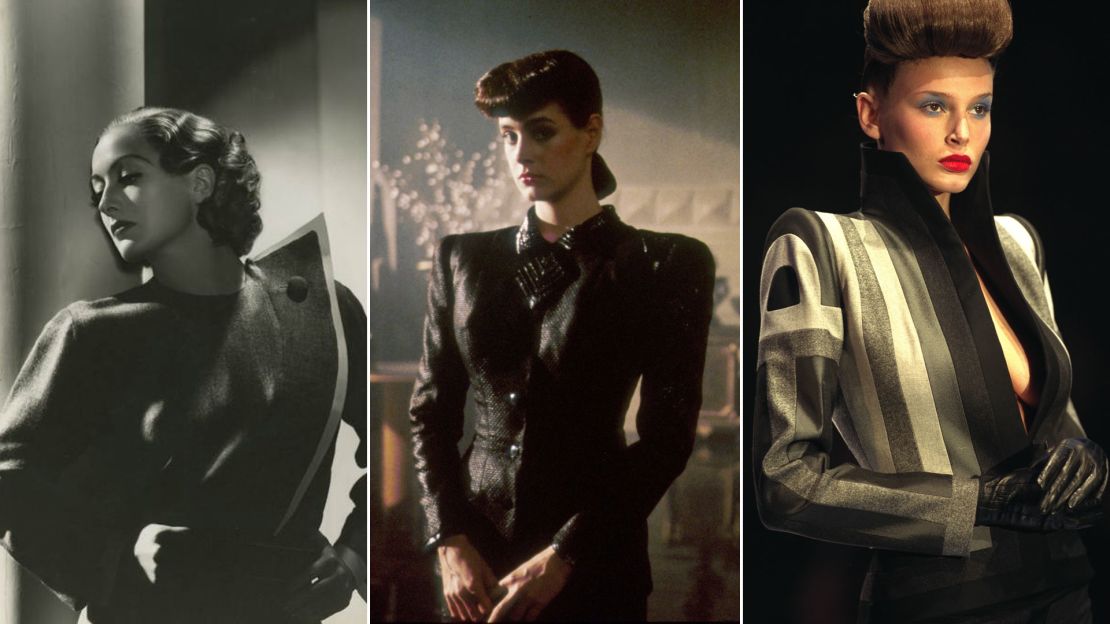
Deckard’s rogue androids, called “replicants,” channeled punk in leather, studs and dog collars, affecting the look of a disenfranchised underclass. East Asian looks were prominent among the huddled masses; layered, asymmetrical designs reminiscent of Issey Miyake’s ’80s output littered the city.
A seven-year-old Jeremy Scott was transfixed. The American creative director of Moschino and his own namesake label recalls watching alongside his older brother in a small-town cinema in the summer of 1982: “I was never the same after that.”
“I was mesmerized by the mix of what was then futuristic with what was already retro,” wrote Scott in an email. “That is what makes ‘Blade Runner’ the gold standard (among) sci-fi dystopian worlds, as it’s believable. Because we do not live in a world where everything is from today … We live in a chaotic world of various decades of architecture, automotive design and fashion, combining and colliding all (in) that same moment.”
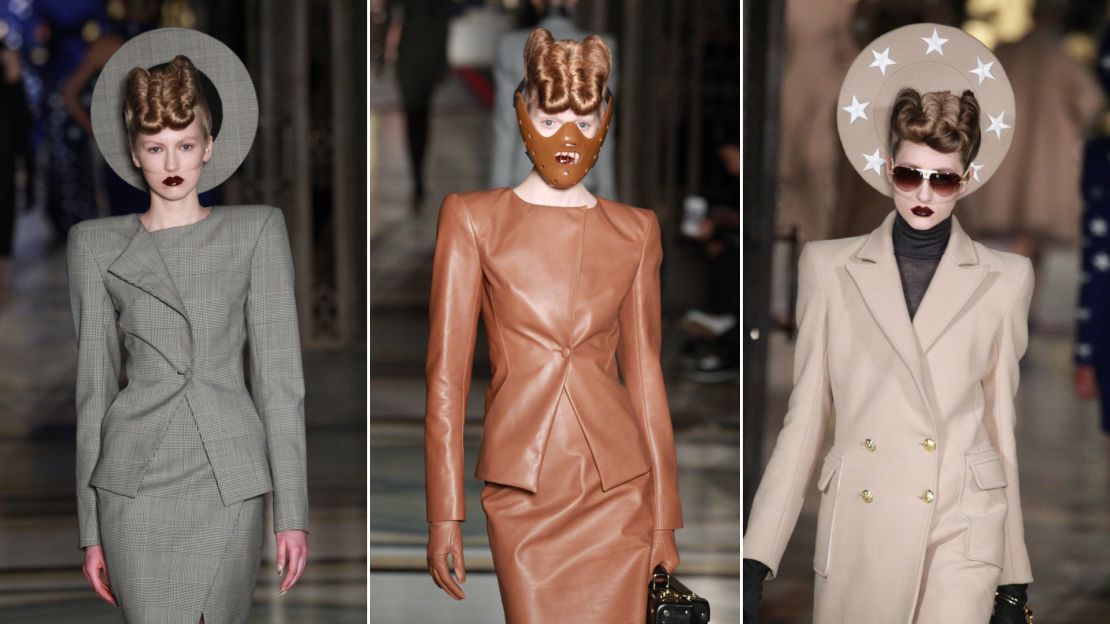
Months after its release, Vivienne Westwood and Malcolm McLaren debuted “Punkature,” a collection featuring a skirt printed with a smiling geisha – the same face seen on a billboard several stories high in the film.
After this initial homage, fashion’s response has largely been self-reflexive towards Kaplan and Knode’s work. Take for example Rachael’s tailoring: the costume designers exaggerated existing silhouettes, and in a feedback loop, fashion houses amplified Kaplan and Knode’s “whacked-out take” in turn.
Alexander McQueen’s angular, tailored Autumn-Winter 1998 ready-to-wear collection for Givenchy remains a paragon. In the same collection he worked in a pared-down tribute to Rachael’s ostensible fur coat, and a year earlier created headdresses halfway between bearskin and backcombed bob, reminiscent of Pris the replicant’s hair.
(Almost two decades later, Gareth Pugh’s skirt suits for his Autumn-Winter 2016 collection traced a line back through McQueen’s work at Givenchy to the film that inspired him.)
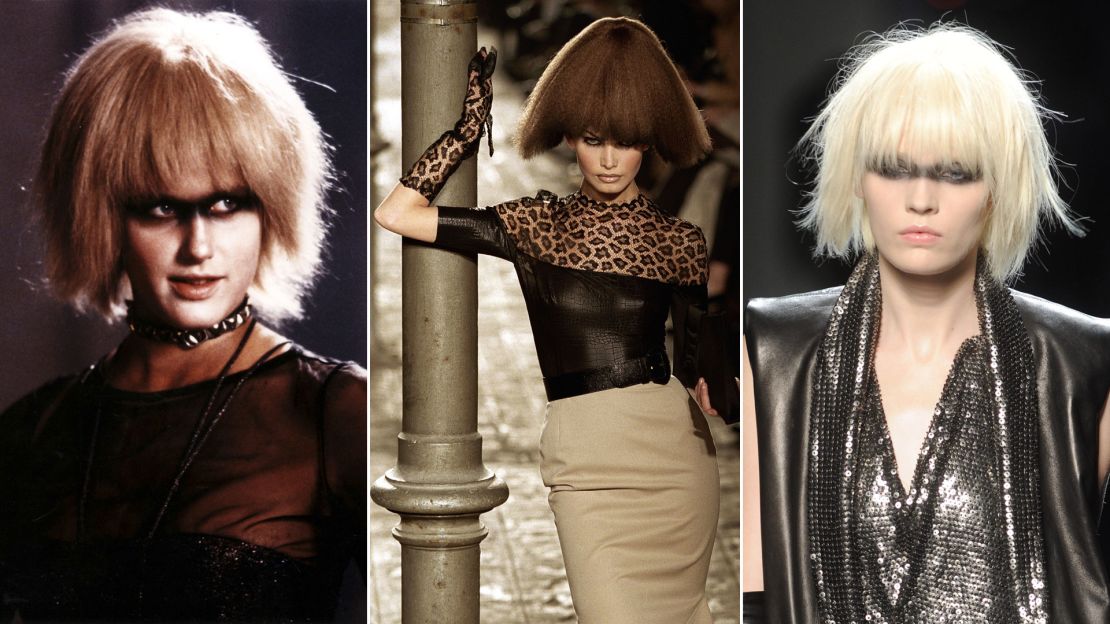
Pris, played by Daryl Hannah, caught Jeremy Scott’s eye too. For “Rampage,” his second collection in the late ’90s, Scott “wanted to create a wardrobe that appeared to be constructed from trash bags, fish and net” – perhaps a call-back to this scene. “I wanted the feeling of the collection to convey (her) emotion and aggression,” he added.
Similarly, Jean Paul Gaultier remembered Hannah’s character “as a new superwoman, sexy and (an) atomic bomb,” and he appropriated her “amazing” raccoon eye makeup for his Autumn-Winter 2009 Haute Couture collection.
Since a “Blade Runner” sequel was first mooted in 2011, its predecessor has received increased sartorial attention from the fashion industry. Standing at a crucial juncture in such an influential story, perhaps April was right to be nervous. So what can we expect from her, and from Los Angeles, circa 2049?
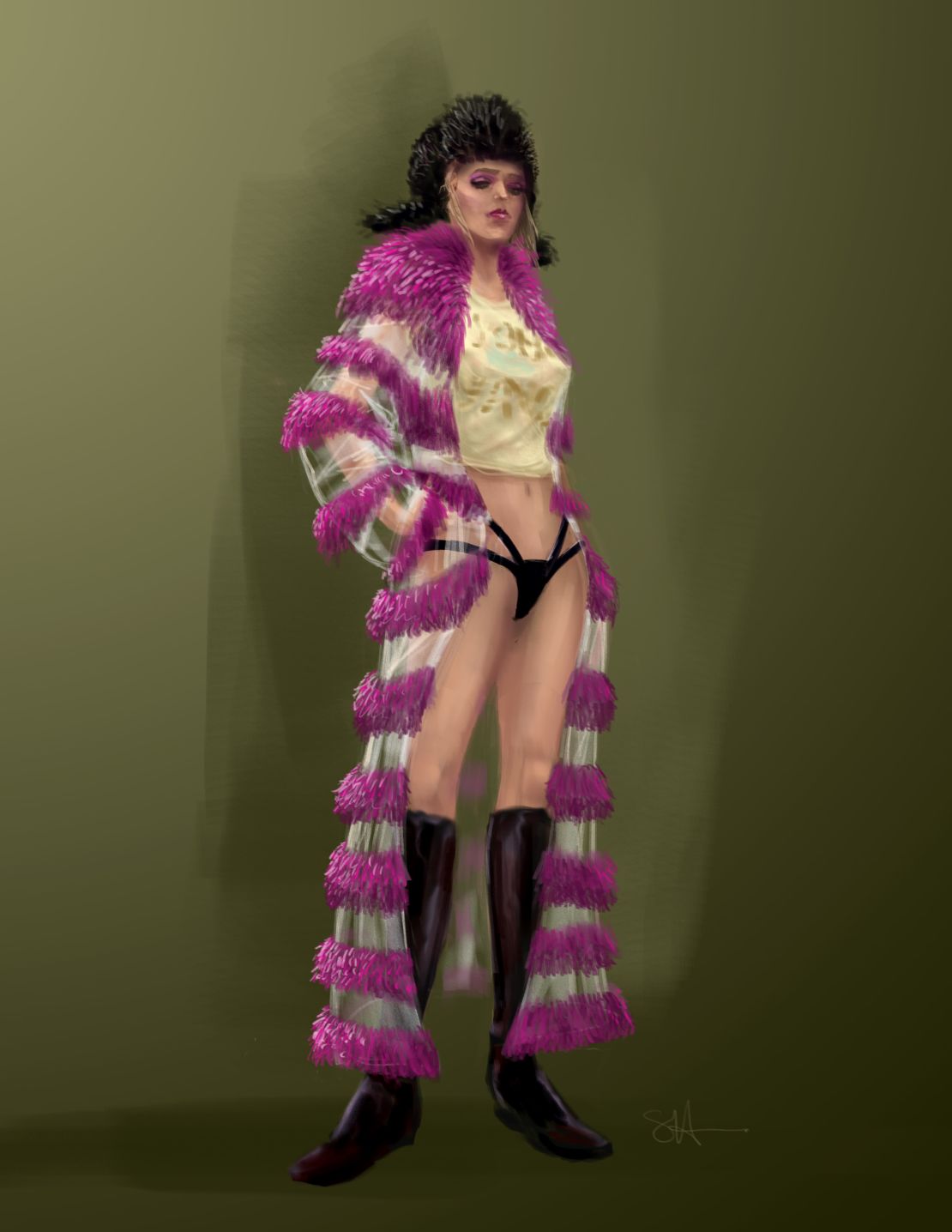
“Denis (Villeneuve) was thinking and thinking at the beginning, and finally he came out and said ‘It’s the same world, except it’s more brutal. It’s really brutal,’” April remembered of their initial discussions.
“The world – this world – did not evolve very much, because they’re dying. It’s bad over there. If you’re still on Earth it’s because it’s not going very well for you … The ones that stayed behind, it’s because they’re not healthy enough or they’re not rich enough,” she added.
“The Earth is dying, basically, and they’re in survival mode.”
Villeneuve and co. have mined Philip K. Dick’s 1968 novel “Do Androids Dream of Electric Sheep?”, the source material for “Blade Runner.” Set in an irradiated San Francisco in 1992, after a catastrophic global war, the book has more apocalyptic overtones than its film adaptation. Radioactive dust is claiming both bodies and minds. Mental aptitude and financial resources are required to buy a ticket off Earth. Many lack one or both.
Conscious of this, April set to work imagining fashion 32 years from now.
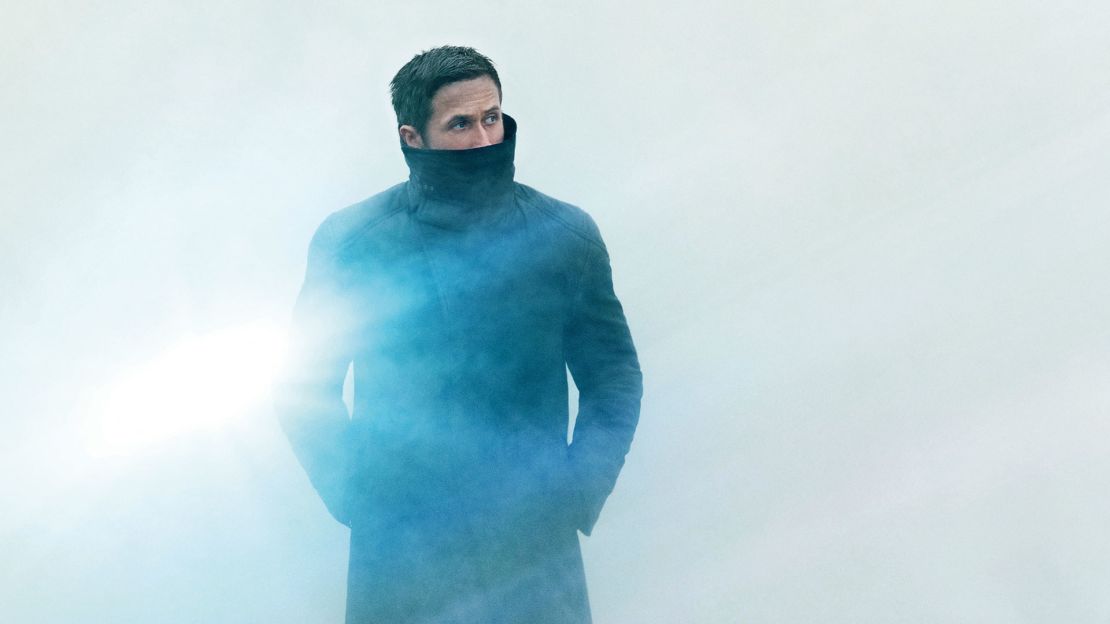
“I had to restrain myself,” she said, but there were still opportunities to show some flare. “We’re using a lot of fake fur and plastic and lights… (and) a lot of breathing masks, because it’s so polluted.”
The fur is explicitly fake, she added, because the real deal “hasn’t existed for many years” – another nod to Dick’s novel, in which animal life is scarce. And the shearling jacket worn by Ryan Gosling’s Officer K; the one Esquire called “badass” and “the real star” of the film’s trailer? It’s fake too. “Actually it’s not shearling,” April says. “It’s not leather, it’s cotton,” waterproofed and painted.

Avid fans will be looking for clues in April’s work. Deckard, for one, appears dressed down in a gray t-shirt and cargo pants. April confirms the character has ditched his clashing striped shirt and plaid tie combo.
“It scared me to do that,” she says, “but at the end of the day, he didn’t change and he’s timeless … we really wanted something timeless.” Those still arguing whether Deckard is human or replicant, read into that what you will.
One character who might know is nefarious replicant designer Niander Wallace, played by a Jared Leto. Wallace’s monochrome kosode (similar to a kimono) was inspired by production designer Dennis Gassner’s “so zen, so pure” sets, April said.
“I wanted something you almost don’t notice. I wouldn’t say that I was going to dress him like Steve Jobs, (but he probably) wears a new one every day … like a uniform.”
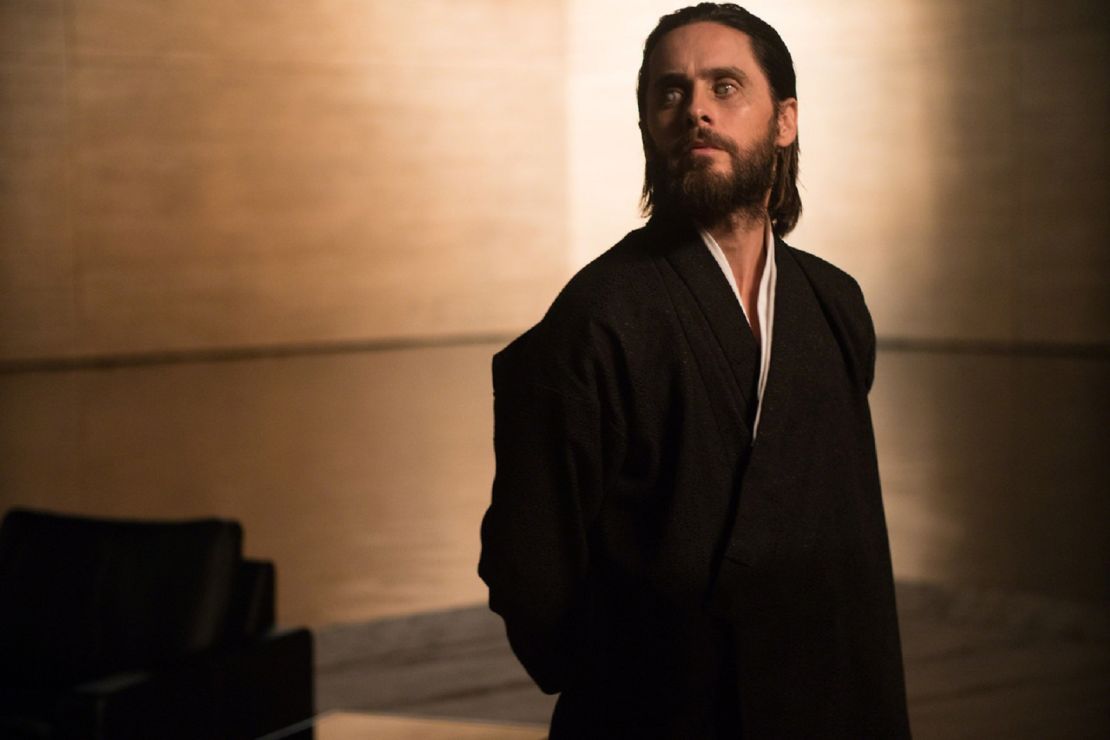
Leto loved the costume, said April – so much so that the Oscar-winner took it home.
Further details are scant, and the costume designer is unable to divulge as much as she would like. Only on Oct. 6 will April’s full efforts be revealed. One hopes “2049” will leave behind more loose threads for designers to spin into the fabric of their work. Inspiration can be an ephemeral thing, after all: like tears in the rain.

